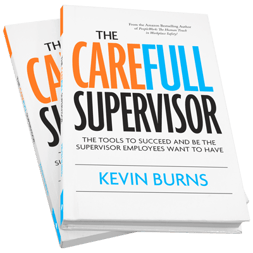The position of safety person is no more important than any other employee position. No one job is more important or carries more weight than another.
 When you’re trying to get employee buy-in to the safety program, you are trying to advance an ideal. You are, in essence, selling a point-of-view and the safety program. Selling an idea takes tact and strategy. This is where safety people can make a big mistake. They assume that safety will sell itself. They also assume that employees will respect the safety person’s position. Neither can be assumed.
When you’re trying to get employee buy-in to the safety program, you are trying to advance an ideal. You are, in essence, selling a point-of-view and the safety program. Selling an idea takes tact and strategy. This is where safety people can make a big mistake. They assume that safety will sell itself. They also assume that employees will respect the safety person’s position. Neither can be assumed.
In twenty years of consulting with safety people, senior managers, and front-line staff, I have encountered two big reasons why employees don’t respect safety, the safety program or the safety person. These are by no means absolutes. However, the first is that employees can feel manipulated by safety, the safety people or the safety program. The second is that they feel that the safety person can demand undue respect.
Let’s explore the two reasons employees don’t respect safety:
1Employees feel manipulated to comply with safety against their will. Ask any employee if they’ve ever felt manipulated to do something in safety against their will. You’ll get an almost unanimous yes. Lay witness to safety meetings with gruesome injury photos, gut-wrenching stories of injury or death, or head-shaker Darwin Award winner memes. It’s chastisement, teasing, and manipulation.
So, do safety people influence safety or manipulate safety behaviors? Safety people will answer influence. But most don’t recognize the subtle difference between influencing and manipulating. That difference is what separates safety leaders from ordinary safety people.
EmergingLeader.com has this to say about manipulation and influence. “Manipulation deliberately uses and abuses other people to act out your intentions. Influence, on the other hand, requires buy-in on the part of the person being influenced and a willingness on their part to support your goals.”
You need buy-in to influence. Without buy-in, employees who have not yet bought into safety will feel manipulated into compliance. You cannot influence another person without them first buying-in.
2Safety people demand respect. Safety regularly uses admonishment as a tool. Employees and senior managers have been shamed into respecting safety. On social media, senior managers and employees are chastised for not recognizing the safety person’s importance. Safety people claim they are there to keep everyone safe. But that’s not the job at all. They are not there to keep everyone safe. Safety people are there to influence the decisions of employees into keeping themselves safe. They're safety people, not superheroes.
Safety people complain that employees and senior managers need to understand that safety people are of utmost importance. But truthfully, the position of safety person is no more important than any other employee position. It's not the position that is valuable - it's the person who will bring varying degrees of value. No one job is more important or carries more weight than another. To believe otherwise is to belittle your co-workers. That creates silos and separates safety from other departments.
For these two reasons alone, employees don't respect safety, the safety department, the safety advisers or the safety managers. They will, however, respect the person doing the job. But only when that person has commanded respect by the person they are - not demanded respect for the position they hold.
How To Influence Safety Buy-In
When selling your point-of-view, there are two parts. The first is you; the person. If people buy-in to you as a decent a fair person who cares about other people, then they will offer you their respect. They will be willing to engage in conversation. When that happens, you’ll be in a position to make the second sale; your point-of-view. It’s nearly impossible to make the second sale if you don’t make the first sale. People will buy-in to the safety person before they buy-in to the safety program.
If you want employees to buy in, then you will have to sell yourself - not your position. When you achieve buy-in, employees will start to respect you, the safety procedures and the safety program.
Safety leaders use dialog to get buy-in first. Then, once buy-in has occurred, mutual respect builds influence. Both parties move forward together. It’s not one against the other. When you’re moving forward together, you have the basis for influence to take place. When you’re at odds, you will have to manipulate to get compliance.
 There is no automatic respect just because you're in safety. You earn respect by the person you are - not the position you hold. So put away the attitude of self-importance and help build high levels of trust and respect first. If they like you and trust you, they will respect you. People will buy-in to the safety program right after they buy-in to you - the safety leader.
There is no automatic respect just because you're in safety. You earn respect by the person you are - not the position you hold. So put away the attitude of self-importance and help build high levels of trust and respect first. If they like you and trust you, they will respect you. People will buy-in to the safety program right after they buy-in to you - the safety leader.
Kevin Burns is a management consultant, safety speaker and author of "The Perfect Safety Meeting" and his newest #1 Amazon Health & Safety Bestseller, "Running With Scissors - 10 Reasons To Invest in Safety In Slow Times." He is an expert in how to get through to people - how to talk with them so they hear and understand. Kevin's presentation "Trust The Process - Instill A Safety Attitude To Build An Engaged Culture Of Safety" will help your organization reach the following goals: better engagement and buy-in to safety, increased teamwork, better communication, lower turnover resulting in increased profits from production. Click here for more information and to discuss your needs with Kevin.
(c) Can Stock Photo


